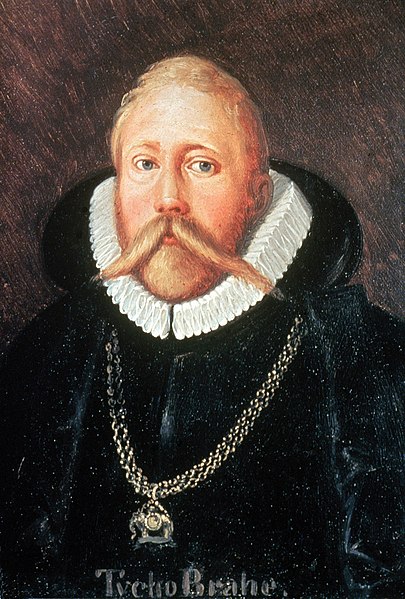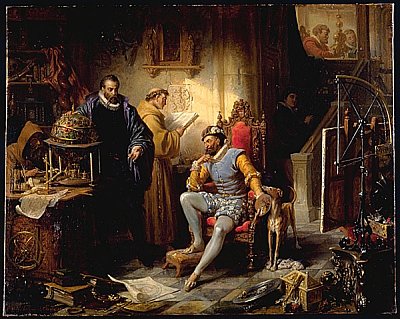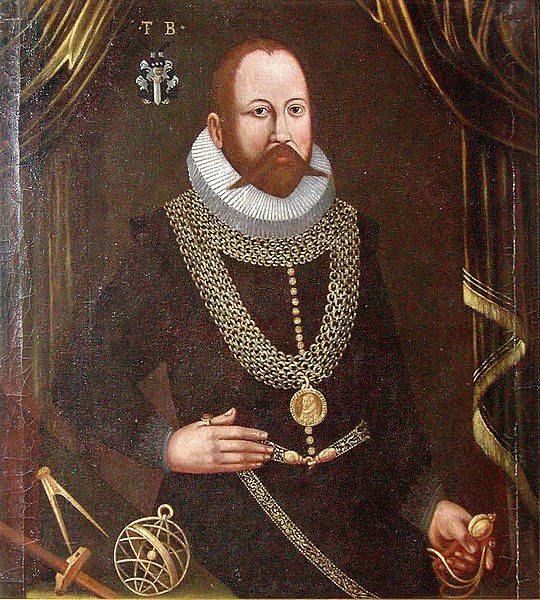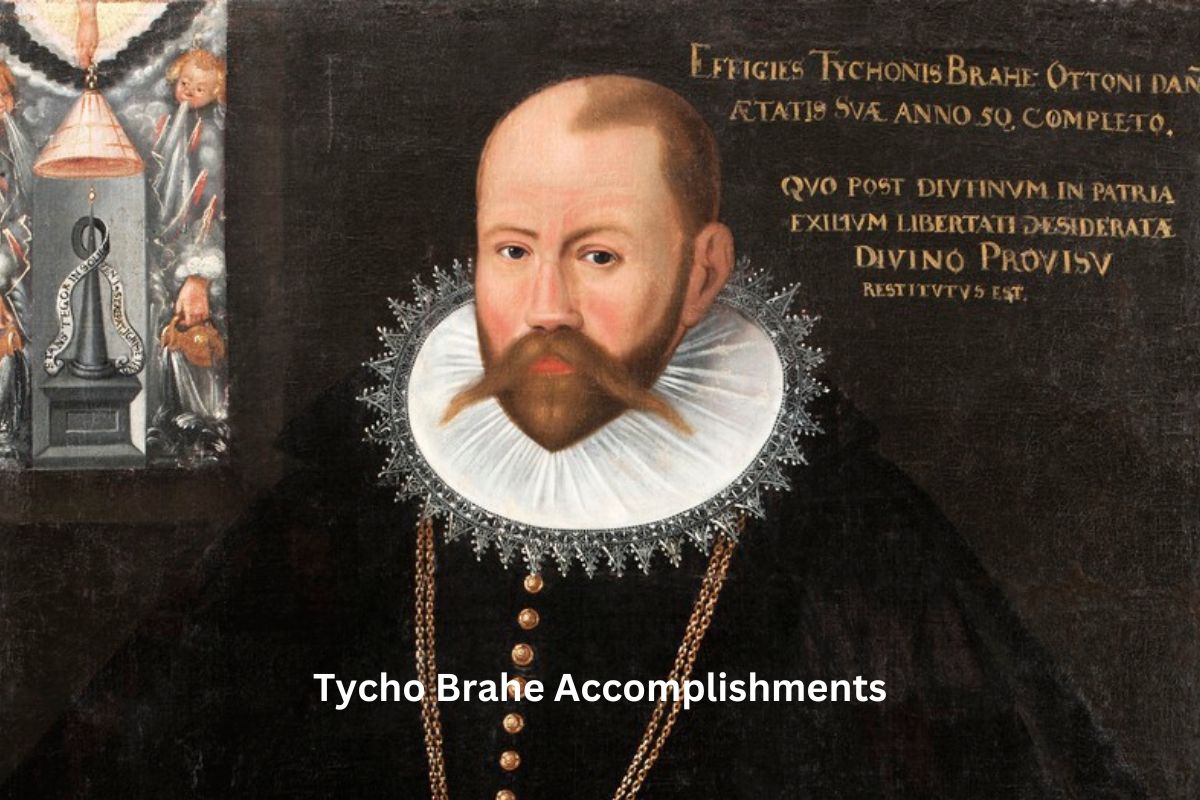Tycho Brahe, a Danish astronomer and alchemist of the 16th century, made significant contributions to the field of astronomy. His meticulous observations, groundbreaking discoveries, innovative instruments, and influential patrons left a lasting impact on the scientific community.
In this overview, we will delve into ten key accomplishments that highlight his remarkable career and influence in the realm of astronomy and the study of the heavens.
Accomplishments of Tycho Brahe
1. Precise astronomical observations
Tycho Brahe was known for his incredibly meticulous and accurate observations of the night sky. Using a variety of specially designed instruments, such as quadrants and sextants, Tycho meticulously recorded the positions of stars and celestial objects over many years.
Also Read: Facts About Tycho Brahe
His observations were far more accurate than those of his predecessors, as he was able to measure celestial positions with an unprecedented level of precision.
This commitment to accuracy set a new standard for astronomical research and laid the foundation for more advanced astronomical studies in the future.

2. Discovery of a new star (Tycho’s Nova)
In 1572, Tycho made one of his most famous discoveries when he observed a bright, new star in the constellation Cassiopeia. This event, known as “Tycho’s Nova” or “SN 1572,” was significant for several reasons.
First, it challenged the prevailing Aristotelian view of the heavens, which held that celestial objects were unchanging and immutable. The appearance of a new star contradicted this idea and raised questions about the nature of the cosmos.
Second, Tycho’s careful observations of the nova allowed him to demonstrate that it was located beyond the Moon, in the realm of the fixed stars, dispelling the notion that celestial objects could not change. This discovery contributed to the shift towards a more dynamic view of the universe.
3. Accurate planetary observations, particularly Mars
Tycho’s detailed observations of the planets, especially Mars, were instrumental in advancing our understanding of the solar system.
He meticulously recorded the positions of Mars as it moved across the sky, providing a wealth of data that would later prove crucial for Johannes Kepler’s formulation of the laws of planetary motion.
The accuracy of Tycho’s Mars observations allowed Kepler to refine his heliocentric model, eventually leading to the development of Kepler’s laws, which played a pivotal role in the Copernican revolution and the advancement of modern astronomy.
Tycho’s observations of other planets also contributed to the improvement of our knowledge of their orbits and movements.

4. Development of advanced astronomical instruments
Tycho Brahe was not only a skilled observer but also an innovative instrument maker. He designed and constructed a variety of precision instruments to aid in his astronomical observations.
Some of these instruments included large quadrants, sextants, and mural instruments. These devices were made with meticulous craftsmanship and allowed him to measure the angles and positions of celestial objects with unprecedented accuracy.
Tycho’s instrument-making skills were a crucial factor in his ability to gather the precise data that would later revolutionize our understanding of the heavens.
5. Establishment of the Uraniborg observatory
Tycho Brahe’s dedication to astronomy led him to build a state-of-the-art observatory on the island of Hven, which he named Uraniborg. Construction began in 1576, and it was one of the most advanced observatories of its time.
Uraniborg featured not only well-designed observing rooms but also apartments for assistants, laboratories for alchemical experiments (as Tycho was also interested in alchemy), and a printing press for publishing his findings.
The observatory’s location on Hven allowed Tycho to make precise observations in a relatively unobstructed environment, far from the light pollution of cities, making it an ideal location for astronomical research.
6. Proposal of the Tychonic system
Tycho Brahe’s contributions extended beyond observational astronomy; he also had significant influence on the development of cosmological models. He proposed a unique and influential model known as the Tychonic system. In this model, Tycho combined elements of both the geocentric and heliocentric systems.
According to the Tychonic system, the Earth remained at the center of the universe, while the planets orbited the Sun. This model was an attempt to reconcile the observed motion of the planets with the geocentric view that was prevalent at the time.
Though it was eventually superseded by Kepler’s laws of planetary motion and the heliocentric model, the Tychonic system represented a transitional step in the evolution of our understanding of the cosmos and contributed to the ongoing debate about the structure of the solar system.

7. Compilation of the Tycho Catalog of stars
Tycho Brahe compiled an extensive catalog of stars known as the “Tycho Catalog” or “Tycho’s Star Catalog.” This catalog included detailed measurements of the positions and brightness of over 1,000 stars. Tycho’s careful and systematic cataloging of stars significantly improved the accuracy of star charts and navigation.
Astronomers and navigators of the time greatly benefited from this comprehensive catalog, as it provided essential reference data for celestial navigation and contributed to advancements in astronomy.
8. Accurate predictions of lunar and solar eclipses
Tycho Brahe’s precise observations of the Moon’s motion and the positions of celestial bodies enabled him to make highly accurate predictions of lunar and solar eclipses. These predictions were crucial for both practical and scientific purposes.
Navigators, for instance, relied on such predictions for accurate timekeeping and navigation at sea. Additionally, Tycho’s eclipse predictions contributed to the refinement of calendar systems and the improvement of astronomical calculations.
9. Secured support from influential patrons
Tycho Brahe was fortunate to receive support from various influential patrons during his lifetime. His first major patron was King Frederick II of Denmark, who provided Tycho with the island of Hven, where he established the Uraniborg observatory.
Later in his career, Tycho moved to Prague and gained the patronage of Emperor Rudolf II of the Holy Roman Empire. These patrons not only provided financial assistance but also offered the protection and resources necessary for Tycho to continue his astronomical research without significant financial constraints.
Their support was instrumental in enabling Tycho to make his groundbreaking observations and contributions to astronomy.
10. Significant influence on the scientific community and later astronomers
Tycho Brahe’s meticulous observations and data collection methods had a profound and lasting impact on the scientific community of his time and beyond. His accurate and extensive datasets became essential reference materials for astronomers who followed him, including Johannes Kepler and Galileo Galilei.
Tycho’s observations of the planets, particularly Mars, played a critical role in the development of Kepler’s laws of planetary motion, which were instrumental in advancing the heliocentric model of the solar system. Tycho’s work also contributed to the gradual shift away from the geocentric view of the universe.
His dedication to empirical observation and precision set a high standard for future astronomers and helped pave the way for the scientific revolution of the 17th century. Tycho Brahe’s legacy continues to be celebrated in the history of astronomy for his pioneering efforts and contributions to our understanding of the cosmos.
